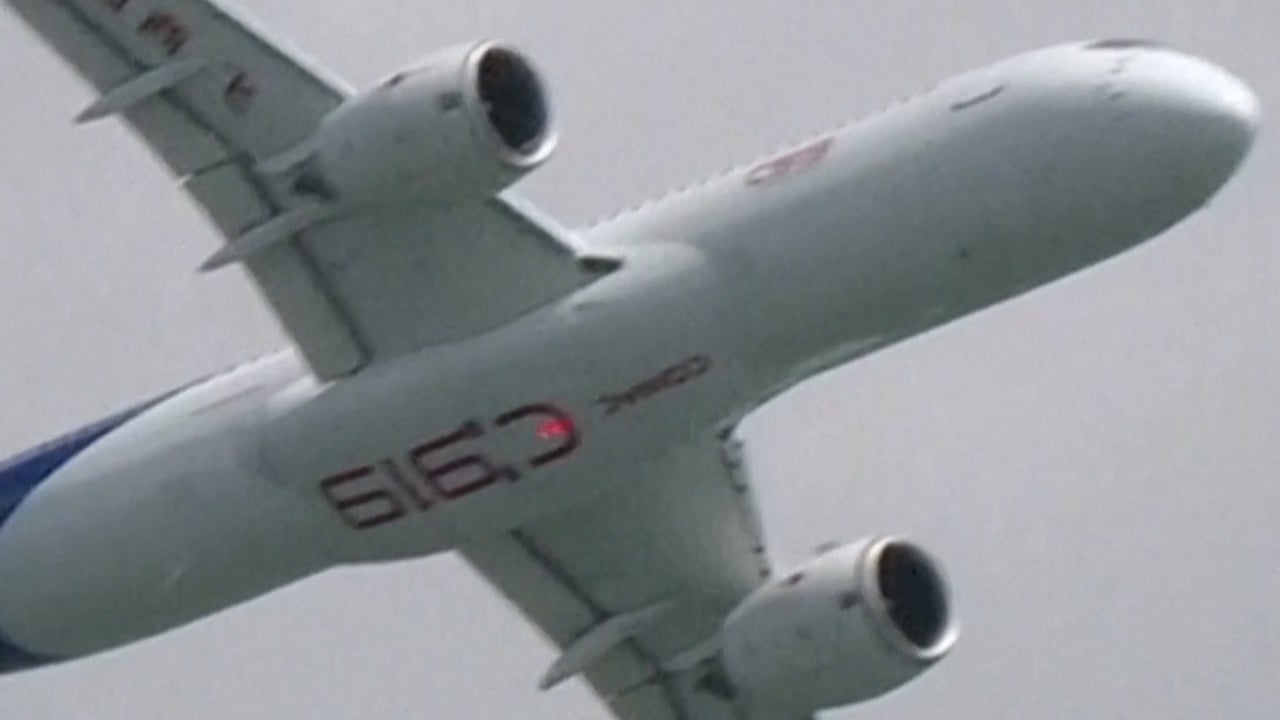South China Morning Post economy reporter Frank Chen attended an organised media tour featuring China’s home-grown passenger jet, the C919, earlier this month. He recounts his first impressions and what caught his eye, from the production line to inside the cabin and how pilots and crew are trained.
At a sprawling assembly line that produces the narrowbody C919 passenger jet, its maker – the Commercial Aircraft Corporation of China (Comac) – proudly boasts how automated and intelligent the manufacturing process will soon become.
Already, the Shanghai facility is surprisingly quiet and tidy, with just a small number of workers seen as a handful of journalists were escorted through.
A ticket has been hard to come by, due to the rarity of the jet and limited routes it flies. Just four C919s are in service with China Eastern Airlines – its first and currently sole operator – and it flies from Shanghai to Beijing, Chengdu and Xian.
But expansion plans are in the works to roll more off the line faster, and Comac explained during the tour this month that its ambitions include a new production line that will see airframe parts welded together on a massive conveyor belt – moving the C919’s assembly along at 1.5 to three metres per hour.
As the aircraft takes shape, engines will be mounted and tested before the jet is moved to a painting facility to be coated in white or given a splash of colour for a special livery.
Inside the plane, cabin lights change colour and create a beautiful, rainbow-like hue. It feels new, especially when compared with jets that have remained in operation for several years.
Cabin crew pointed out amenities and features unique to the C919. One of which is good news for passengers like myself who are not very tall – overhead luggage compartments are placed 10cm (4 inches) lower than those on most Western planes, “to better suit the average height of Chinese”, a crew member explained.
This also means that, when seated, some passengers will find it easier to reach the light and fan controls mounted overhead.
A flight attendant also tells me she likes that the C919’s galley is relatively bigger, offering “a more comfortable space for work”.
Aside from the guided tour of the C919 and its manufacturing facility, Comac also arranged to show off its training campus on the opposite side of Shanghai.
It was packed with pilots and flight stewards from major carriers. A timetable shows a packed schedule of classes offered from 9am to 8pm, with courses ranging from preflight prepping, landing-gear operations, and maintenance of the C919’s imported engines.
“We are running short of everything – from dormitories to simulators – and we are building everything,” a Comac receptionist said.
Giant Chinese flags are hung throughout the facility, though Comac still relies on foreign engineers to install and test critically important equipment such as flight simulators, which put pilots through all types of extreme conditions they could encounter during flight.
I was keen on testing out one of these simulators, but my request was politely rejected by the foreign workers on the basis of “intellectual property considerations”.
But Comac said it is developing home-made simulator alternatives. When that happens, perhaps they will invite me back to see what it feels like at the helm of a C919.
“With more parts made domestically, we are trying to make the C919 an even more Chinese jet,” a Comac manager said.


